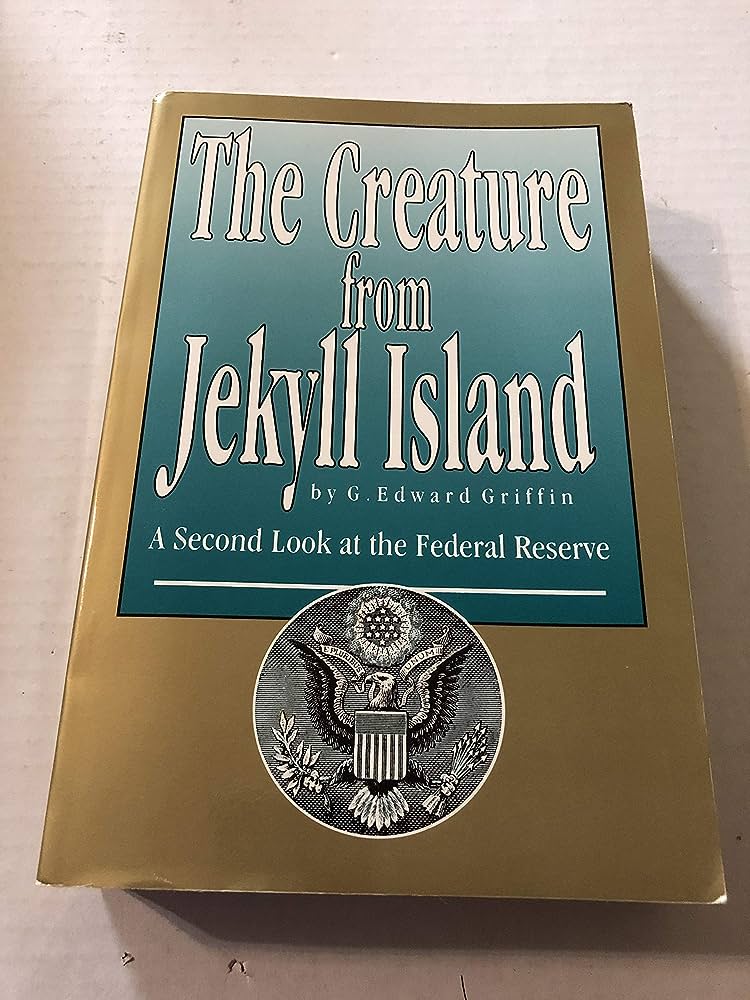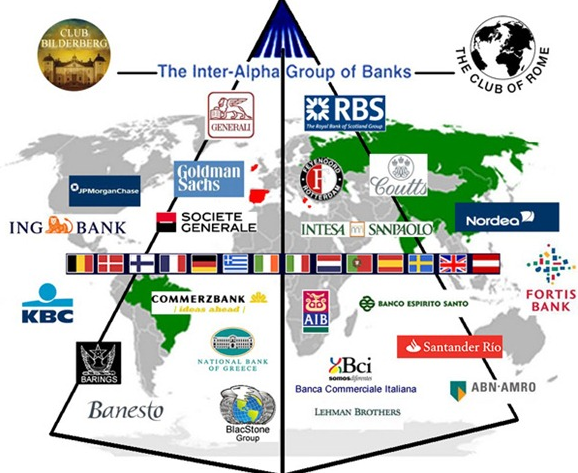
The Federal Reserve Note (FRN) is a type of currency that is issued by the United States Federal Reserve System. It is the official currency of the United States and is used for all transactions within the United States. The FRN has been in circulation since 1913, when the Federal Reserve was created to help regulate the money supply and provide stability to the US economy. Unfortunately, the FRN has become worth less over time due to the government’s practice of printing money, which has resulted in inflation. This has caused the FRN to lose some of its purchasing power and has even caused it to reach negative value in some cases. As a result, the FRN is often referred to as one of the largest Ponzi schemes in history.
Exploring the Impact of the Federal Reserve Note on the U.S. Economy
The Federal Reserve Note, commonly referred to as the dollar, is the official currency of the United States. It has been in circulation since the establishment of the Federal Reserve System in 1913 and has had a profound impact on the U.S. economy. The Federal Reserve Note is a form of fiat money, meaning it is not backed by a physical commodity such as gold or silver and is instead accepted as legal tender based on the faith of the government. The Federal Reserve Note has become the world’s most used currency and is the primary means of payment in the U.S. economy. It is used to pay for goods and services, make investments, save, and borrow. This widespread use of the dollar creates stability in the U.S. economy as a whole, as it allows for a reliable medium of exchange between individuals and businesses. The Federal Reserve Note is also an important tool for the Federal Reserve System in conducting monetary policy. The Federal Reserve uses its ability to increase or decrease the amount of money in circulation to influence the economy. By increasing the money supply, the Federal Reserve can stimulate economic growth, while reducing the money supply can help control inflation. This power to influence the economy is an important part of the Federal Reserve’s role in managing the U.S. economy. In addition to its role in monetary policy, the Federal Reserve Note also serves as a store of value. By holding dollars, individuals and businesses can protect their wealth from economic volatility. This stability is important for economic growth and helps to create an environment of confidence in the U.S. economy. Overall, the Federal Reserve Note has had a tremendous impact on the U.S. economy. Its widespread use as a medium of exchange creates stability and allows for the efficient functioning of markets. Its role in monetary policy and as a store of value further solidify its importance to the U.S. economy.
Examining the Ponzi Scheme Behind the Creation of the Federal Reserve in 1913
The United States Federal Reserve System was created in 1913, and has since become the central banking system of the United States, controlling the nation’s money supply and setting monetary policy. However, there is a dark side to the creation of the Federal Reserve that has largely been overlooked. In reality, the Federal Reserve was created through a Ponzi scheme orchestrated by private bankers, who sought to enrich themselves at the expense of the American public. The Federal Reserve Act of 1913 was the result of a complex conspiracy between the US government, private bankers, and members of Congress. The Federal Reserve Act was passed without public debate or discussion, and it granted a monopoly on the issuing of US currency to a select group of private bankers. These private bankers, known as the Federal Reserve Board, were given the ability to create money out of thin air, and to use this new money to purchase government bonds from the US Treasury. The way this works is that the Federal Reserve Board creates money out of thin air, and then uses it to purchase government bonds. The bonds are then sold to the public, who must pay interest to the Federal Reserve Board. The interest payments are then used to pay the salaries of the members of the Federal Reserve Board and to purchase more government bonds. This creates a situation where the Federal Reserve Board is constantly creating money out of thin air, and then using it to purchase government bonds and generate a profit for itself. In essence, the Federal Reserve Act of 1913 created a massive Ponzi scheme that was designed to enrich the private bankers who created it, while simultaneously burdening the American public with ever-increasing debt. This scheme has been perpetuated for over a century, and it is still in effect today. The American public continues to be burdened with ever-increasing debt, while the private bankers who created the Federal Reserve continue to reap the rewards.
Analyzing the Consequences of the Federal Reserve’s Printing of Money
The Federal Reserve, or the Fed, is the central banking system of the United States. It is responsible for controlling the money supply and setting the nation’s monetary policy. One of the primary tools the Fed uses to influence the economy is its ability to print money. This power has both short-term and long-term consequences, and understanding these effects can be critical in determining the proper course of action. In the short-term, printing money can provide a boost to the economy. By increasing the money supply, the Fed can stimulate spending, which in turn can lead to an increase in economic growth. This is especially true during economic downturns, when the additional money can help jumpstart the economy. However, there are also long-term consequences to consider. When the Fed prints money, it causes inflation, which is an increase in the price of goods and services. Over time, this can have a negative effect on the economy, as it makes it more expensive for people to buy goods and services, thus reducing their purchasing power. Additionally, if the Fed prints too much money, it can lead to hyperinflation, which is a rapid and extreme increase in prices. Hyperinflation is especially damaging, as it can lead to economic collapse. In summary, the Federal Reserve has the power to print money, which can be beneficial in the short-term but can lead to long-term consequences. Therefore, it is important for the Fed to consider both the short-term and long-term effects when making decisions on how much money to print.
Investigating the Decline of the Federal Reserve Note’s Value
The Federal Reserve Note is the form of paper currency used in the United States of America, and its value has been in decline in recent years. This decline has been attributed to several factors, including a weak economy, the effects of inflation, and the introduction of new forms of currency. This article will explore the causes of the decline in the value of the Federal Reserve Note and discuss the ways in which it can be addressed. First and foremost, the weak economy has played a major role in the declining value of the Federal Reserve Note. The economic downturn of 2008, combined with the subsequent recession, has had a profound impact on the value of the currency. This has been exacerbated by the low interest rate environment, which has reduced the value of existing paper currency. As a result, the Federal Reserve Note has become less valuable as a store of value and an instrument of exchange. In addition, the effects of inflation have also contributed to the decline in the value of the Federal Reserve Note. Inflation is the gradual rise in the general level of prices for goods and services, and this has eroded the purchasing power of the currency. As inflation increases, the value of the Federal Reserve Note decreases, making it less attractive as a store of value. Finally, the introduction of new forms of currency has had an impact on the value of the Federal Reserve Note. Cryptocurrencies, such as Bitcoin, have become increasingly popular in recent years, and this has caused the value of the Federal Reserve Note to decline. The increasing popularity of digital currencies has led to an increase in demand for alternative forms of currency, which has had a negative effect on the value of the Federal Reserve Note. In order to address the declining value of the Federal Reserve Note, it is important to understand the causes of its decline. By understanding the underlying causes of the decline, it is possible to take steps to address the problem. This could include measures such as increasing the purchasing power of the currency, reducing inflation, and encouraging the use of alternative forms of currency. The decline in the value of the Federal Reserve Note is a complex issue that requires a comprehensive approach. By understanding the causes of the decline and taking steps to address them, it is possible to restore the value of the currency and ensure that it remains an effective store of value and an instrument of exchange.
Debating the Pros and Cons of the Federal Reserve Note System in Modern Times
The Federal Reserve Note System, which was first established in 1913, is the monetary system that is currently used in the United States. While the Federal Reserve Note System has been in place for over a century, it is important to consider the pros and cons of the system in modern times. One of the primary advantages of the Federal Reserve Note System is that it is backed by the Federal Reserve Bank. As such, it is a stable form of currency and is not subject to the whims of the market. This means that it is less volatile than other forms of currency, making it a safer option for investors. Additionally, the Federal Reserve Note System is extremely efficient, allowing for rapid transactions and the ability to move funds quickly. That being said, there are also some drawbacks to the Federal Reserve Note System. One of the major issues is that it allows for the Federal Reserve Bank to manipulate the money supply, which can have a negative effect on the economy. Additionally, it can lead to inflation if the money supply is not managed properly. This can be a serious problem, as it can lead to higher prices and an overall decrease in the value of money. In conclusion, the Federal Reserve Note System has both advantages and disadvantages, and it is important to consider both when determining whether it is an effective system for modern times. While it is backed by a reliable source and is relatively efficient, it does have the potential to be manipulated and can lead to inflation if not managed properly. Ultimately, it is up to the individual to decide whether or not the Federal Reserve Note System is right for them.
The Federal Reserve Note has been a major contributor to the economic downfall of the US, and the root cause of this can be traced back to the creation of the Federal Reserve in
1. This has been one of the biggest Ponzi schemes in history and its effects have been felt by generations of Americans. It is a reminder of the importance of careful economic management and regulation, and the need to ensure that all economic transactions are conducted in a responsible and transparent manner. That is why bitcoin is a possible solution





